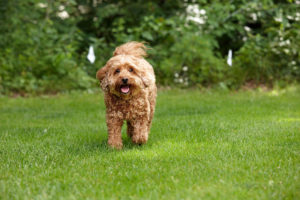Teach Your Dog to Stop Barking
Barking can be one of the hardest dog problems to solve. The more you yell at your dog to stop barking, the more he barks. And unlike other pup issues, this one affects the neighbors, sleeping kids, and other dogs in the house.
The quickest way to quiet a talkative dog is with the DogWatch BarkCollar. It senses the vibration of the bark, and gets the dog’s attention with a correction zap. One of the reasons it’s so effective is because it’s immediate. The dog doesn’t have to think very much to make the connection between the bark and the zap. You can find the right level of zap that quiets your dog’s bark, or use our favorite level, Progressive. When you turn the dial to P, the first bark is corrected with a vibrate, and if your dog continues barking the level goes higher with each bark until he stops.
The other important training component of the BarkCollar is consistency. Dogs understand in black and white, so if every bark is corrected, they learn so much quicker. No matter who is at home with the dog, even if he’s home by himself, the BarkCollar will correct barking. That way your dog learns that ALL barking is bad.
Here are some tips when using the BarkCollar:
- Charge it completely before using it for the first time. It has a rechargeable battery that lasts several months.
- Make sure your dog doesn’t know it’s about the collar. For him, the problem is the barking. To do that, put the collar on him at a time when he wouldn’t bark, and then create a barking situation once he’s forgotten that he’s wearing it. For instance, a couple hours after putting the BarkCollar on your dog, walk out the garage door and ring the doorbell.
- Start on a low level and work up to the level where your dog stops barking. There are 7 total levels, starting at a vibration.
- Check out the Bark Counter feature. Learn about your dog’s barking patterns when you’re not at home, and address specific triggers if necessary. Lots of barking at 3:00 on weekdays? Could be that pesky school bus.
Read all about the BarkCollar here, and purchase it online here. Give us a call if you have questions or want to learn more.
